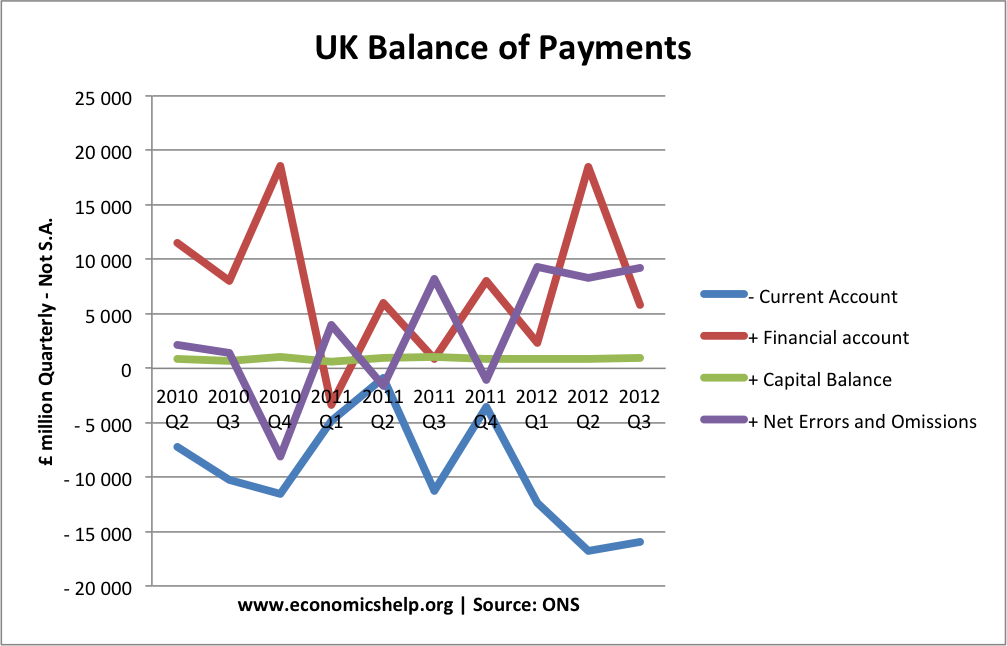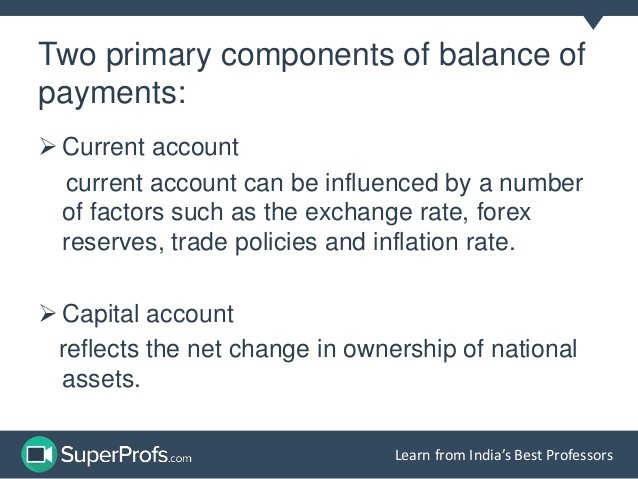Factors Which Influence The Balance of Payments
Post on: 16 Август, 2015 No Comment

‘An important factor which influences the Balance of Payments of a country is the exchange rate of its currency vis-a- vis other major currencies.’ Briefly explain this statement.
The balance of payments (BOP) is defined by the OECD (Organization for Economic Co-operation and Development) as follows “The balance of payments is a record of a country’s international transactions with the rest of the world. This is equivalent to the transactions between residents of a country and non-residents. The balance of payments is divided up into the current account and investment and other capital transactions.
These transactions, which are recorded by a double- entry system of book-keeping, involve goods, services, transfers, loans granted or received, market securities, foreign exchange etc.
International trade in services is shown in the current account balance of payments statistics and forms part of what is known as invisibles. The current account balance constitutes the sole source of comparable data on international cross-border statistics on services.”
stats.oecd.org/glossary/detail.asp?ID=150)
In essence the BOP sheet is a record of all economic transactions between a country and the rest of the world. Sources of incoming funds such as exports are noted as positive and out flow of funds such as imports are recorded as negative on the sheet. The BOP consists of three components:
a) Current account — This portrays the flow of goods and services (exports and imports), income and current transfers
b) Capital account – This account shows the volume of capital transfers such as foreign direct investment, loans and grants, and acquisition/disposal of non-produced, non- financial assets.
c) Official reserve assets – This account is a balancing item in the BOP equation which ensures the current account and capital account transactions sum up to zero. These comprise of assets held by the country’s national bank such as gold stock and convertible foreign currencies. Funds are used from this account when the total outflow of funds exceeds the total inflow of funds in the current and capital accounts. Thus if the balance in current and capital accounts is negative, its considered a deficit and if the balance is positive, it is considered as surplus.

The BOP is extremely importance in today’s world as it acts as an indicator of a country’s economic position in relation to other countries. For example in developing countries, the BOP showcases the dependence of the countries on external aid from developed nations. The historical trending of the BOP acts as a valuable tool to evaluate a country’s economic prospects and also the appropriate exchange rate of its currency.
stats.oecd.org/glossary/detail.asp?ID=877) Exchange rates are affected the market forces of supply and demand and reflects the overall international competiveness of the country. Drivers such as inflation, economic policies, government budget surpluses/deficits, economic productivity and growth and overall foreign exchange based transactions also impact the exchange rate of a country. Among the many forces internal to a country, its perceived purchasing power is one of the main factors that contribute to flux in its exchange rate. Factors such as unemployment, inflation levels, retail sales are a few among others that affect purchasing power and thus the foreign exchange rate.
Off the many forces that affect exchange rates, the most influential ones are tracked fiscally through a country’s BOP status – such as import and exports, capital flows in the form of foreign direct investments and foreign assistance/debt. The prevalent exchange rate of a country’s currency influences the exchange demand (paying for imports) and exchange offer (received for exports) which in turn impacts the external demand of exports and internal demand for imports and thus affects the Balance of Payments which consists of the trade and capital balance.
For example, India received significant foreign investment between 1993-4 which ideally should have helped the Rupee appreciate but the Rupee was devalued by 24 percent and exchange rate was frozen to avoid reducing exports and keep imports at a low, in a bid to continue attracting foreign investment. Whenever a currency appreciates, it becomes more expensive for the external buyer to purchase exports and thus reduces their appetite to purchase at the time. Also internal buying power increases and domestic consumers will have an increased appetite to import. Both these export and import effects if materialized will hurt the economy if uncontrolled. This in turn affects the trade balance and hence the BOP.
Foreign exchange reserves are amassed by central banks such as the Reserve Bank of India and enhances the buying power of the country which in turn affects the BOP. By controlling the exchange rate, we can enhance export and reduce imports, improving the BOP surplus which in turn assists in amassing more foreign exchange and the cycle continues. All in all we can see the foreign exchange rate of a country against other major currencies plays an important factor in influencing the Balance of Payments of a country.














